Toolkit
To help manage your projects and answer any questions.
The Impress team are qualified professionals that take pride in our work. While knowledge
and tradition have been handed down over the years it’s innovation that drives us.
Proofing
A proof is a preliminary version of a printed product. It provides a close representation of how the artwork will appear when printed. Proofs are important to ensure you are satisfied with what will be produced.
Impress will supply a digital proof in a PDF file. Take time to have a careful, thorough look over the proof. It is also important to keep in mind that colours can vary on a screen compared to a physical print. In the printing industry, a CMYK colour profile is used to produce your print, however, screens display colour in an RGB colour profile. The difference in these two can create some slight variations in colour. If you find an error after the completion of printing, it is then your responsibility and your cost if you choose to reprint.
*Note: Print-ready supplied files will not be proofed unless requested (this may result in delayed production).
Our process
- Enquire and request a quote/order
- Accept your quote (if applicable)
- Design and proofing stage (if applicable)
- Pre-press
- Printing – please allow 7-10 working days from the approval of the proof.
(turnarounds may vary depending on the volume of work). - Finishing/Binding
- Packing
- Dispatch
- We will contact you once completed if collecting.
ISBN (International Standard Book Number) and Barcodes
Visit Thorpe-Bowker Identifier Services for more information at www.myidentifiers.com.au
An ISBN can help readers find and purchase your book. It identifies the book’s specific format, edition, and publisher. The ISBN links to essential information about your book, enables more efficient marketing and distribution, is required by most retailers and is the global standard for book identification.
A barcode is a graphical representation of a book’s ISBN. Barcodes are used on physical books, allowing them to be machine-read, and facilitating automated sales and inventory tracking – a requirement for most large retailers.
Copyright
Copyright is a form of intellectual property that protects the original expression of ideas. It enables creators to manage how their content is used. An author’s copyright lasts for the life of the creator, plus 70 years. In Australia, copyright law is set out in the Copyright Act 1968 (Cth). This is federal legislation and applies throughout Australia. The Commonwealth Attorney-General administers Australian copyright law.
For more information go to the Australian Copyright Council at copyright.org.au
Copyright Page for Books
In the front of your book, you will need to include some of the following:
Firstly, your copyright includes the copyright symbol, your name as the copyright owner, and your book’s year of first publication. These elements are presented like this: © John Smith, 2024
The second element is a statement reserving your rights as the copyright holder to reproduce the work (in other words, no one can copy your stuff without your permission). This can be as simple as: All rights reserved.
Other common elements on the copyright page include:
Reservation of rights: Expanding on the previous ‘All rights reserved’ statement, you might have some more explanation about fair use of your work, such as references made in a review, or in someone’s essay.
The edition of the book: If you release later editions of your book, you will indicate the current edition on the copyright page.
Cataloguing-in-publication information: In Australia, you can register your book with the National Library of Australia (note, you can’t do this until you’ve gotten an ISBN) and they’ll give you some new information to include, such as the subjects your book falls under and your Dewey number. This all arrives in an email and can be copied and pasted onto your copyright page.
Contributor credits: You can include the details of your editor, designer, printer, illustrator, and any other suppliers who helped produce your book.
Disclaimer: If your book is a how-to book, it’s suggested to include a disclaimer about your content being general in nature and not representing professional advice.
Coming Soon – Templates
These are downloadable pdf templates to help you set up your artwork to the correct specifications.
Templates are set up at actual size and include bleed and internal margins.
High-Resolution Print-Ready Supplied File Requirements
A print-ready PDF must meet certain criteria to be printed. By supplying a print-ready PDF file, a simple workflow is created, enabling a smooth transition from design through to print and delivery. If you require changes, you will need to resupply the file.
-
The trim size matches the order specifications.
-
A minimum of 3mm bleed on all edges.
-
Trim, perforation or fold marks are indicated outside the trim area.
-
Internal artwork margins are a minimum of 5mm from the edge of the page; this is regarded as a safe zone.
-
Fonts are embedded or converted to outlines.
-
Photo, illustration, and scan resolution is 300 dpi at 100% of the final image size.
-
All Images are embedded in the file.
-
Black text and elements are 100% black and not a mix of CMYK (Cyan, Magenta, Yellow and Black).
-
A multiple-page PDF requires artwork to be supplied as individual pages in one PDF, not as spreads.
(e.g. a 16pp booklet should be supplied as one PDF with 16 pages). -
For bound books, extra margin width must be included on the spine edge (minimum 10mm for Wire Bound and Perfect Bound).
If any assistance is required with formatting your files, we have a team of in-house Graphic Designers to answer your questions.
7 things to apply in a Print-Ready file
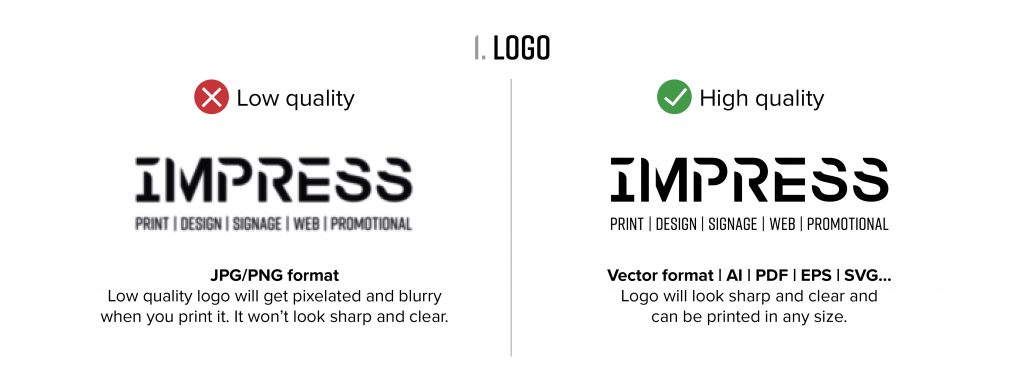
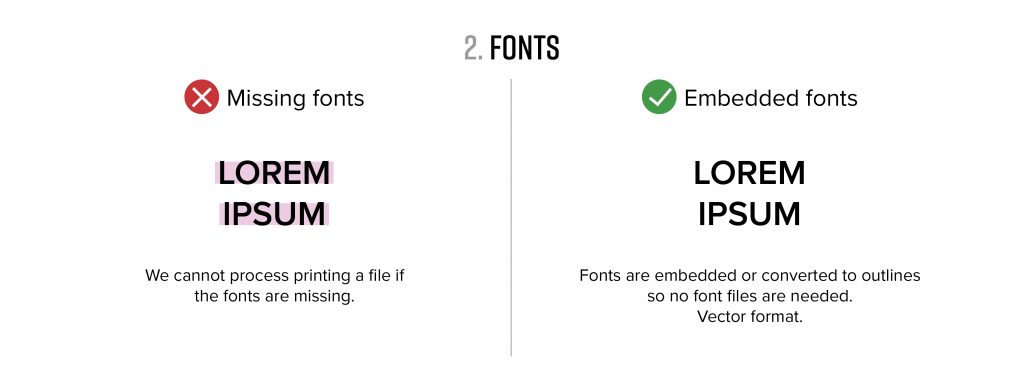
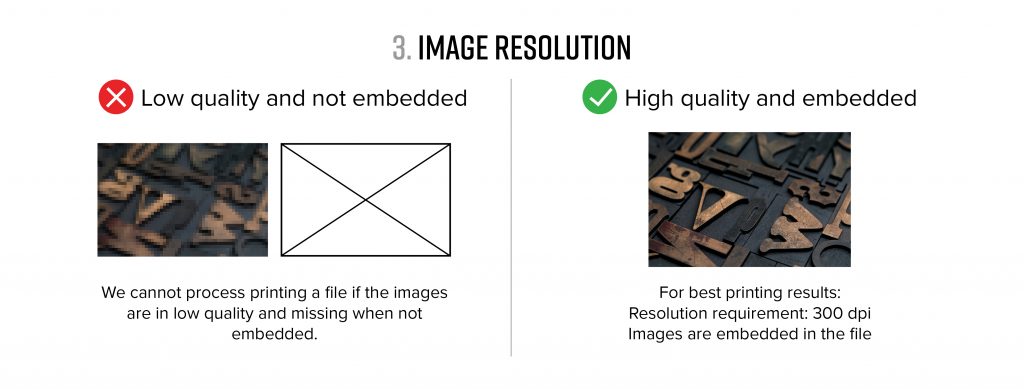
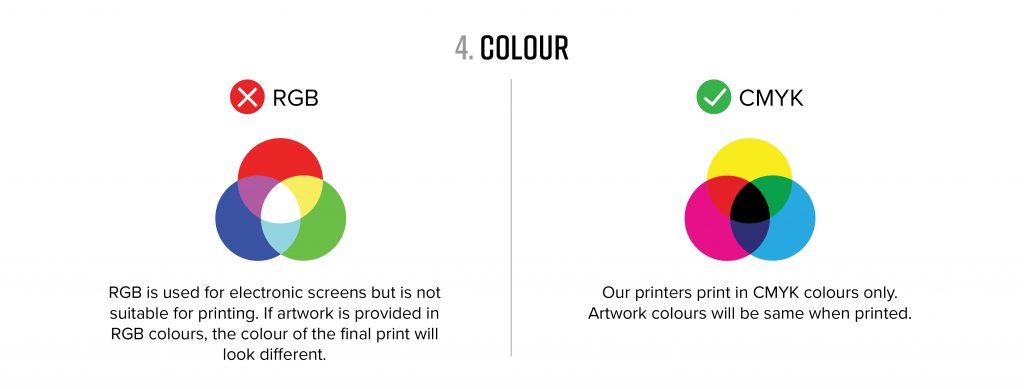
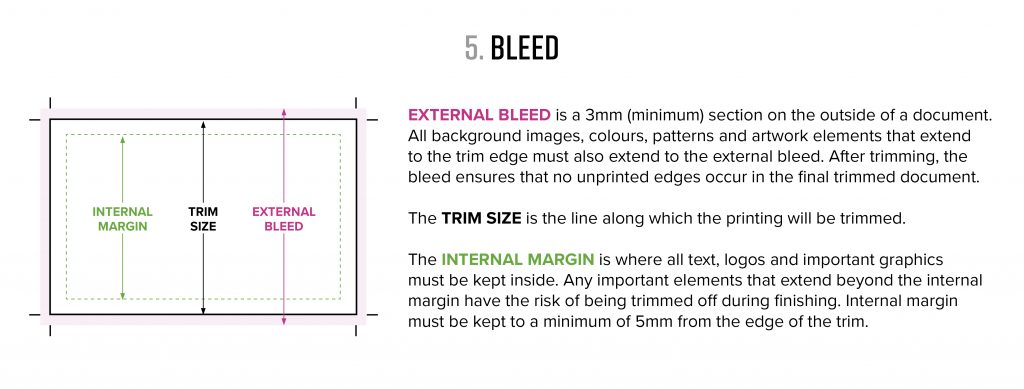
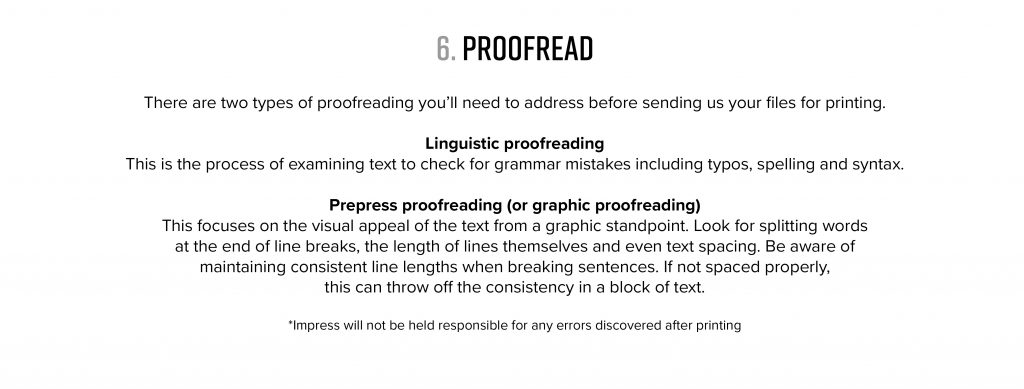

Stocks
Our paper and card stocks are sustainably sourced from FSC accredited suppliers. We have a range of stocks varying from standard laser, cards, gloss, to specialty textures and 100% recycled paper.
Our standard stocks:
- Gloss: 400gsm, 350gsm, 300gsm, 250gsm, 200gsm, 150gsm
- Uncoated: 400gsm, 350gsm, 300gsm, 250gsm, 200gsm, 150gsm, 100gsm
- Satin: 350gsm, 300gsm, 200gsm, 150gsm
- Specialty: 330gsm Advocate Linen, 325gsm Zenith, 300gsm Enviro Board, 300gsm Cast Coat, 110gsm Polyart, 220gsm Polyart
Scodix
When you want to create a great first impression, Scodix provides a luxurious finish that people just can’t put down. Scodix is a high gloss, raised metallic film that sits on top of matte laminate. It comes in metallic gold, silver, and rose gold.
Spot UV
Spot UV is similar to scodix and creates the finish of a slightly raised glossy film. This comes in clear, so it can be used to print over full colour prints or images to draw people’s attention.
Laminating
Laminating options include Gloss and Matte, and create a quality protective finish to printed materials.
Foiling
Foiling is a hot-pressed metallic sheet process, which sticks onto the surface to create an embellishment on the paper. This is a beautiful, luxurious finish to help your printed material stand out.
Embossing & Debossing
The embossing process in printing raises the paper according to the design. The opposite effect is also possible using the same process. This is known as debossing, which sinks into the paper.
Die Cutting Forme
A die cutting forme is essentially like a template that stamps out shapes in your printed materials, like a cookie cutter. Die cutting formes are used for any custom shapes or packaging.
Perfect Binding
Perfect binding is a process where groups of pages are bound together using glue to create a clean, crisp and professional printed product. This binding option is mainly used for larger page numbers, including novels, books and school yearbooks. It has a spine that can be printed on.
Section Sewn
A section, or signature is a group of sheets folded in half, that are sewn together at the spine, forming a book block that are then glued along the binding edge to give extra strength and durability.
Wire Binding
A binding method that is commonly used in the production of calendars, notebooks and reports. Wires are available in a range of colours. An advantage of this binding style is that it can open completely flat on a desk and allow for 360-degree rotation of bound pages.
Saddle Stapling
Saddle stapling is a very popular book binding method in which folded sheets are gathered one inside the other and then stapled through the fold line with wire staples. This binding option is limited by the amount of pages and stock weight.

Padding
Using glue, pads can be bound on any of the straight edges.
Drilling
Drilling holes are required when ring binding or for products such as swing tags, calendars and hanging items.
